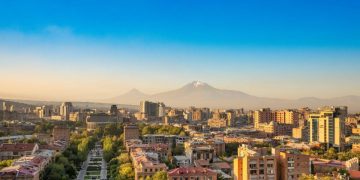THE sun has kicked out a powerful solar flare in the last 24 hours, sparking concern over radio blackouts.
The US National Oceanic and Atmospheric Administration (NOAA) said there is a 65 per cent chance that flight communications and satellite operations may be disrupted this week.

Once AR3738 has rotated out of view, Earth is expected to see fewer solar flares firing in its direction[/caption]

Solar flares are our solar system’s largest explosive events[/caption]
The powerful energised particles are being spat out from the AR3738 sunspot, which has been particularly active in recent days.
There are at least 12 active sunspots currently on the sun that are facing Earth’s direction.
It forms the second X-class solar flare this week – the strongest kind of solar flare.
The solar flare burst out of the sun on 16 July, which was followed by a radio blackout over the Atlantic Ocean.
Radios across Africa, Europe and parts of North and South America were also affected.
What are solar flares?
They are our solar system’s largest explosive events.
While they can cause radio blackouts, they also bring Aurora Borealis, or the Northern Lights, to Earth.
Aurora is the dance between solar particles and the Earth’s magnetic field that makes the upper atmosphere glow.
Solar flares are ranked in classes, with X-class being the most powerful, followed by class M, C and the weakest, B.
For each group, a number from one to 10 – or beyond for an X-class flare – is assigned to to each flare based on its strength.
When a solar flare electrically charges Earth’s upper atmosphere, radio signals for communications have a harder time passing through.
It essentially makes the upper atmosphere denser, which is why there is a risk of lost radio signals.
Once AR3738 has rotated out of view, Earth is expected to see fewer solar flares firing in its direction.
That being said, the sun is currently in a period of heightened activity.
This also means there is set to be a big uptick in Northern Lights sightings from this year through to 2025.
This is because we are entering the sun’s Solar Maximum – when solar activity peaks during the sun’s 11-year solar cycle.
During this time, the sun produces “dramatically more” auroral displays, Darren Baskill, a physics and astronomy lecturer at Sussex University, explains.
Sunspots become twice as likely during the Solar Maximum, which lasts between three and five years.
Find out more about science
Want to know more about the weird and wonderful world of science? From the Moon to the human body, we have you covered…
- When is the next Full Moon?
- What is a Super Moon?
- What is SpaceX?
- Where is the edge of space?
- How many bones are in the human body?
- How many chromosomes do humans have?
- What causes a volcano to erupt?
- Which sharks attack the most humans?
- What are the conspiracy theories about the world ending?
- All the UFO sightings and whether aliens are real
- Which country has the most earthquakes?

































